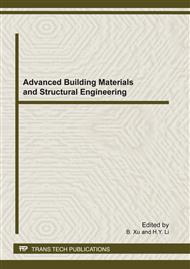p.547
p.552
p.557
p.561
p.565
p.571
p.575
p.579
p.585
A Study on Changing of Minangkabau Houses from Sumatra to Malay Peninsula
Abstract:
Minangkabau house is one of the most particular houses in Southeast Asia. The uplifted rooftop as the shape of buffalo horns, and large-scale single pile house are its main features. From the 17th to 18th century, Minangkabau people in Indonesia migrated massively from the Pagarruyung area of Sumatra to the state of Sembilan on Malay Peninsula. They brought with them the system of a matrilineal society (Adat pepatih), but there was not a complete transplantation of their particular house. This research conducts field investigations on Minangkabau houses in there two areas and analyzes the reasons of the change and major influential factors. The results show how Minangkabau houses transfer from large single pile house into extended small grouped pile houses, which has become another kind of vernacular houses in Malay Peninsula.
Info:
Periodical:
Pages:
565-570
Citation:
Online since:
February 2012
Authors:
Price:
Сopyright:
© 2012 Trans Tech Publications Ltd. All Rights Reserved
Share:
Citation:


